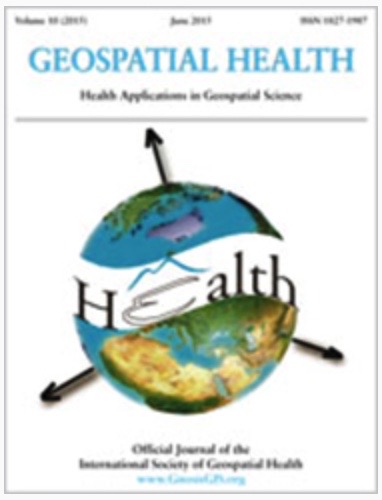Migration statistics relevant for malaria transmission in Senegal derived from mobile phone data and used in an agent-based migration model

Published: 31 March 2016
Abstract Views: 3282
PDF: 1189
HTML: 994
HTML: 994
Publisher's note
All claims expressed in this article are solely those of the authors and do not necessarily represent those of their affiliated organizations, or those of the publisher, the editors and the reviewers. Any product that may be evaluated in this article or claim that may be made by its manufacturer is not guaranteed or endorsed by the publisher.
All claims expressed in this article are solely those of the authors and do not necessarily represent those of their affiliated organizations, or those of the publisher, the editors and the reviewers. Any product that may be evaluated in this article or claim that may be made by its manufacturer is not guaranteed or endorsed by the publisher.
Similar Articles
- Sarah Isnan, Ahmad Fikri bin Abdullah, Abdul Rashid Shariff, Iskandar Ishak, Sharifah Norkhadijah Syed Ismail, Maheshwara Rao Appanan, Moran’s I and Geary’s C: investigation of the effects of spatial weight matrices for assessing the distribution of infectious diseases , Geospatial Health: Vol. 20 No. 1 (2025)
- Worrayot Darasawang, Wongsa Laohasiriwong, Kittipong Sornlorm , Warangkana Sungsitthisawad, Roshan Kumar Mahato, Spatial association of socioeconomic and health service factors with antibiotic self-medication in Thailand , Geospatial Health: Vol. 20 No. 1 (2025)
- Desmond H. Foley, Richard C. Wilkerson, L. Lynnette Dornak, David B. Pecor, Arpad S. Nyari, Leopoldo M. Rueda, Lewis S. Long, Jason H. Richardson, SandflyMap: leveraging spatial data on sand fly vector distribution for disease risk assessments , Geospatial Health: Vol. 6 No. 3 (2012)
- Josh Colston, The neglected tropical diseases (NTD) initiative for Latin America and the Caribbean of the Inter-American Development Bank and the role of geospatial analysis in health programmes , Geospatial Health: Vol. 6 No. 3 (2012)
- Steven K. Ault, Ruben Santiago Nicholls, Martha IdaIí Saboya, The Pan American Health Organization's role and perspectives on the mapping and modeling of the neglected tropical diseases in Latin America and the Caribbean: an overview , Geospatial Health: Vol. 6 No. 3 (2012)
- John B. Malone, N. Robert Bergquist, Mapping and modelling neglected tropical diseases and poverty in Latin America and the Caribbean , Geospatial Health: Vol. 6 No. 3 (2012)
- Samuel F. Atkinson, Sahotra Sarkar, Aldo Aviña, Jim A. Schuermann, Phillip Williamson, Modelling spatial concordance between Rocky Mountain spotted fever disease incidence and habitat probability of its vector Dermacentor variabilis (American dog tick) , Geospatial Health: Vol. 7 No. 1 (2012)
- Nicolai Denzin, Joachim Borgwardt, Conrad Freuling, Thomas Müller, Spatio-temporal analysis of the progression of Aujeszky's disease virus infection in wild boar of Saxony-Anhalt, Germany , Geospatial Health: Vol. 8 No. 1 (2013)
- Rebeca Ramis, Diana Gomez-Barroso, Gonzalo Lòpez-Abente, Cluster detection of diseases in heterogeneous populations: an alternative to scan methods , Geospatial Health: Vol. 8 No. 2 (2014)
- Samuel F. Atkinson, Sahotra Sarkar, Aldo Aviña, Jim A. Schuermann, Phillip Williamson, A determination of the spatial concordance between Lyme disease incidence and habitat probability of its primary vector Ixodes scapularis (black-legged tick) , Geospatial Health: Vol. 9 No. 1 (2014)
You may also start an advanced similarity search for this article.











